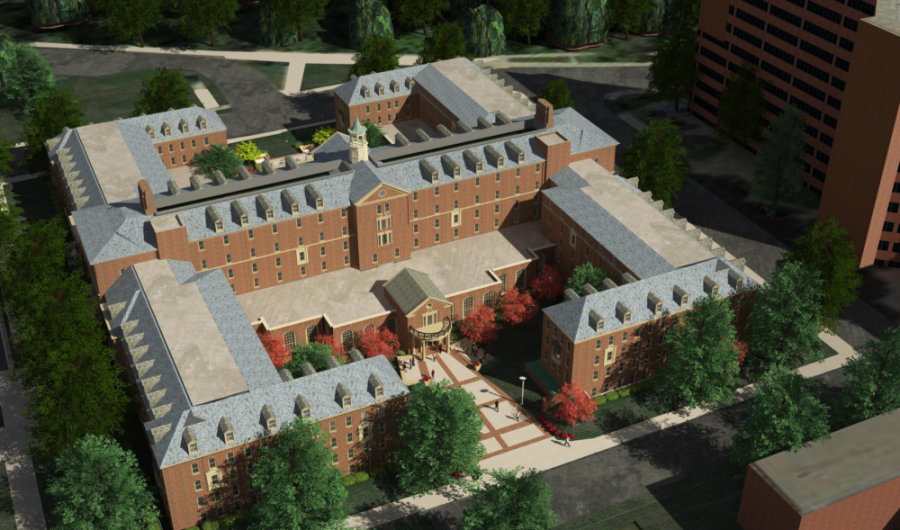Despite ramped-up efforts at the University of Minnesota to provide housing on or near campus for students, lodging continues to be a big concern for the school.
Debate over how to house more students — especially second-year and transfer students — in University housing has persisted for more than a year. Regents and school officials have struggled to agree on the best way to provide housing for an undergraduate population projected to grow by nearly 3,000 in the next five years.
“More and more students want to live on campus or as close to campus as possible,” said board Chair Dean Johnson. “We simply don’t have the room.”
Regent Thomas Devine said the University would need to build a new dorm every three years in order to meet student demand.
“It’s hard to expand your incoming freshman class without having the beds available,” he said.
The University ranks at the bottom of the Big Ten in terms of housing availability, with beds for just over 20 percent of undergraduates. As the University transitioned to a residential student model, private developers swarmed the school’s borders with new apartment buildings.
“When we made the decision to transition from a commuter campus to a residential campus, we [didn’t build] the number of beds that we should have,” said Regent Michael Hsu. “We should do a better job of providing nonprofit housing … instead of relying on the private developers.”
By 2021, University administrators said they hope to add 1,000 beds to accommodate 90 percent of first-year students, 25 percent of second-year students and 10 percent of transfer students.
To help meet that goal, Regents approved two leasing agreements this summer with the nearby Keeler and Radius at 15th apartment complexes.
Beginning in late August 2017 and continuing until the summer of 2022, the University will lease 164 beds in 44 furnished apartments from Keeler Apartments and 772 beds in 200 furnished apartments from the Radius.
“By having University housing for a second semester freshman or a sophomore transfer student, it’s a more comfortable situation,” Devine said. “It’s a more friendly way to get acclimated to the University of Minnesota.”
The school will annually pay about $1.3 million to Keeler and about $6.5 million to the Radius, funded through student housing fees.
“Housing is an expensive item,” Johnson said. “But we’re still trying to keep our prices lower than private developers.”
Additionally, Regents approved a $104.5 million renovation of Pioneer Hall in September to expand its bed capacity by 63after more than a year of debate on the project.
However, some regents voted against the plan, saying such a significant amount of money would be better spent on building a new dorm and expanding bed capacity by much more.
“You could pick up another 500 beds for $70 million,” Devine said.
Others were concerned about the hall closing during the next two school years. The school will make up for the lost beds by converting Roy Wilkins Hall, in addition to the off-campus apartment leases.
Regents say they want to emphasize on-campus living because it boosts GPA’s and graduation rates and is much cheaper than private-sector buildings.
“We’re trying to hold down the cost of attendance, but landlords don’t care about the cost of attendance,” Devine said. “When you start looking at the cost of private sector housing, those numbers are getting close to what you’re paying for tuition at the University of Minnesota.”
With an increased focus on long-term housing strategies, regents approved a 30-year plan for developing certain areas of the East Bank campus this summer — a plan that includes building new residence halls along the Mississippi River.
The plan includes demolishing the Mayo Building to make room for the halls, as well as the demolition of the Centennial and Territorial dormitories for additional Academic Health Center buildings.
School administrators say a riverfront housing neighborhood would achieve connectivity to the rest of campus for students. Still, some regents questioned aspects of the plan.
“I’m really not sure we’ll tear down [Centennial and Territorial halls],” said Regent Richard Beeson. “It’s something we’re going to have to look at more.”
Johnson said the plan stresses the school’s housing and medical priorities, but he cautioned against moving forward too quickly.
“It really takes some prudent thinking and strategies,” Johnson said. “Once you make a decision, it’s difficult to turn back.”








